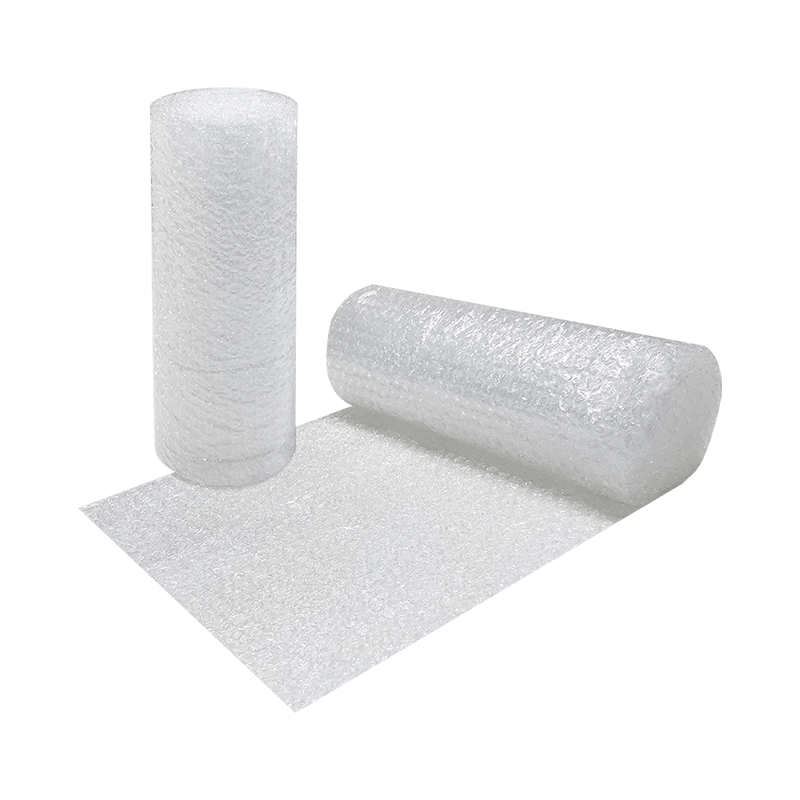Bubble Wrap Rolls: The Ultimate Cushion for Fragile Shipments
Bubble wrap rolls are a staple in protective packaging, but just how effective are they when it comes to cushioning items during shipping, particularly those that are fragile or heavy? As businesses and individuals alike rely on this lightweight, air-filled solution to keep their items intact, understanding the material’s strengths and limitations can help in choosing the right kind of bubble wrap and using it effectively. With a blend of practicality and adaptability, bubble wrap has become an essential asset in shipping protection.
One of the standout features of bubble wrap rolls is their structure—small pockets of air trapped in flexible plastic. This design provides a buffer against shocks, bumps, and vibrations. When a fragile item is wrapped, each bubble acts as a mini shock absorber, dispersing the force of impact and reducing the risk of breakage. The wrap’s flexibility allows it to conform closely to items of various shapes, ensuring there are no weak spots or areas left vulnerable to potential damage. Whether you’re shipping delicate glassware or intricate electronics, bubble wrap can mold around the contours, safeguarding them against jarring movements during transit. Its effectiveness is particularly enhanced in rolls with small or medium bubble diameters, which offer a denser concentration of cushioning air bubbles, ideal for protecting smaller, lightweight, or intricately shaped items.
For heavy items, bubble wrap rolls come in thicker and more durable versions. These heavy-duty rolls use larger bubbles, which provide greater impact absorption, and are often made from thicker plastic for extra resistance to pressure. This type of bubble wrap can distribute the weight of heavier objects more evenly, reducing the risk of bubbles popping or flattening during transit. Some bubble wraps even offer double-layered options or bubble diameters that are specifically designed for bulkier shipments. These options are especially valuable for businesses transporting heavier goods, such as appliances or machinery components, where maintaining structural integrity is crucial.

Beyond its core function as a cushion, bubble wrap rolls also contribute to environmental and logistical efficiency. Unlike foam packaging or shredded materials, bubble wrap is compact and light, minimizing the added weight for shipments. This not only lowers shipping costs but also reduces fuel consumption, contributing to eco-friendly shipping practices. Additionally, bubble wrap is increasingly available in recyclable or biodegradable forms, addressing the growing need for sustainable packaging solutions. As some varieties are made from recycled materials or have anti-static coatings to protect sensitive electronic items, bubble wrap can be tailored to different industry needs, proving its versatility and relevance.
The versatility of bubble wrap rolls extends beyond just packaging. Many options are perforated, making it easy to tear off just the right amount needed, which streamlines packing and minimizes waste. For businesses shipping large volumes of products, bubble wrap that can be used with automated dispensers adds efficiency to the process. Some rolls even come pre-sized to fit standard box dimensions, reducing the amount of cutting required. As a result, bubble wrap is not just a protective layer; it’s an efficient tool that can optimize packing operations while ensuring product safety.
Bubble wrap rolls are among the most effective cushioning solutions available today. They offer a unique combination of lightweight flexibility, substantial impact protection, and adaptability across various types of goods. While they work especially well for fragile items due to their precise cushioning properties, their utility also extends to heavier items with the right choice of thickness and bubble size. By choosing the appropriate type of bubble wrap, businesses and consumers can rely on a tried-and-tested material that continues to evolve to meet modern shipping challenges.


 English
English 中文简体
中文简体 Español
Español

















